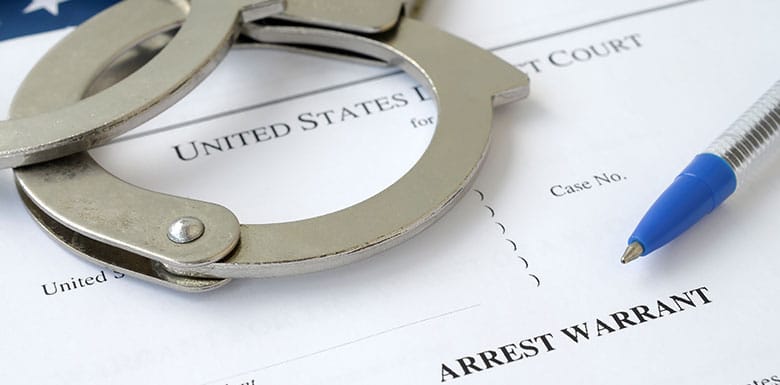What to Expect During Your First Court Appearance in California
Navigating the judicial system can be daunting, especially if you’ve never been in legal trouble. Whether it’s a minor infraction or a more serious charge, understanding what to expect at your first court appearance in California can ease your anxiety and help you prepare for the day.
We’ll break down what to expect, from understanding the charges against you to navigating the courtroom setting.
What Is Arraignment?
Arraignment is typically your first appearance in court after being arrested or summoned. At arraignment, you, as the defendant, are formally charged with a crime and asked to respond to those charges.
The primary purpose of arraignment is to ensure that the defendant understands the specific allegations and their legal rights, including the right to an attorney and a fair trial. During arraignment, the defendant will enter a plea of guilty, not guilty, or no contest, which shapes the direction of subsequent legal proceedings. Additionally, this stage may involve discussions regarding bail, where the court decides if the defendant can be released from custody pending trial and under what conditions.
In essence, arraignment helps maintain the criminal justice system’s integrity by ensuring that all parties are clear about the charges and the legal steps that will follow.
Before You Go to Court
You can take several steps to prepare for your first court appearance, such as:
Consult with Your Criminal Defense Attorney
Discuss your case in detail with your attorney before appearing in court and organize all documentation and evidence that your attorney has advised you to bring. An attorney can provide valuable insights into the legal proceedings, advise on the best strategies, and explain the potential outcomes. Use this time to ask questions, clarify any doubts, and review the evidence or documents related to your case. Ensure you understand the charges against you, the court procedures, and your rights.
Dress Code and Expectations
Dressing appropriately for court is crucial as it reflects your respect for the judicial system. Opt for conservative, professional attire similar to what you would wear for a job interview. Avoid casual clothing such as shorts, flip-flops, or tank tops. Neat, well-groomed, and sober attire will help present a responsible image to the judge and jury.
What to Expect on Arraignment Day
By being prepared and respectful at arraignment, you’ll show the judge you take the situation seriously. Here are some tips to be ready for the day:
Don’t Be Late
Plan to arrive at the courthouse at least 30 minutes before your scheduled appearance. This gives you ample time to go through security, find the right courtroom, and meet with your attorney to go over any last-minute details. Arriving early can also help alleviate stress and feel more comfortable in this new environment.
Follow Courtroom Rules
Knowing how to conduct yourself in court can significantly affect the perception of the judge and jury. Always be respectful and polite and don’t bring in food or drink. Stand when talking to the judge, refer to them as “Your Honor,” and speak clearly and honestly when asked a question. Turn off your cell phone and avoid any unnecessary distractions.
Calling the Case and Entering a Plea
The process begins with the court calling the case and confirming the defendant’s identity. The judge then reads the charges, informs the defendant of their constitutional rights, including the right to an attorney and to remain silent.
Then, you will be asked to respond to the charges and enter a plea. The choices are:
- Guilty: Acknowledging that the defendant committed the offense and waiving the right to a trial.
- Not Guilty: Denying the charges, which leads to the scheduling of a trial.
- No Contest: The defendant does not contest the charges, which legally is similar to a guilty plea but does not admit guilt for the purposes of other non-criminal legal proceedings (like civil suits related to the crime).
Bail Determination and Future Court Dates
If you are in custody, the judge will consider bail, the amount of money you must post to be released from jail while awaiting trial. The judge may decide to you on your own recognizance (without bail), set a bail amount, or deny bail entirely depending on factors like the severity of the offense, such as your criminal history, ties to the community, and flight risk.
Remember, the arraignment is a relatively short initial hearing — it’s not the time to argue your case or plead for leniency.
What Happens after Arraignment?
After arraignment, the criminal justice process continues with several potential steps depending on the plea entered. If you plead not guilty, the court schedules pre-trial motions and hearings where legal issues like evidence admissibility are addressed. At trial, where the prosecution must prove your guilt beyond a reasonable doubt.
If you plead guilty or no contest, the judge may proceed to sentencing either immediately or at a later date, determining the appropriate penalty based on the severity of the crime, your criminal history, and other relevant factors.
Throughout this time, you and your attorney will continue to build your defense, negotiate plea deals, or prepare for trial depending on the case’s progression.
Call Morris Law Today to Fight Your Criminal Charges
Navigating your first court appearance can be a complex and intimidating process, but being well-prepared can significantly ease your experience and impact the outcome. Remember, the decisions made during these early stages can profoundly affect the rest of your case.
Don’t face the criminal justice system alone. By staying informed, acting respectfully in court, and working closely with your lawyer, you can approach this situation with confidence. Call Morris Law today for a free initial consultation.
Contact us at 510-225-9955 today to discuss how we can help.



